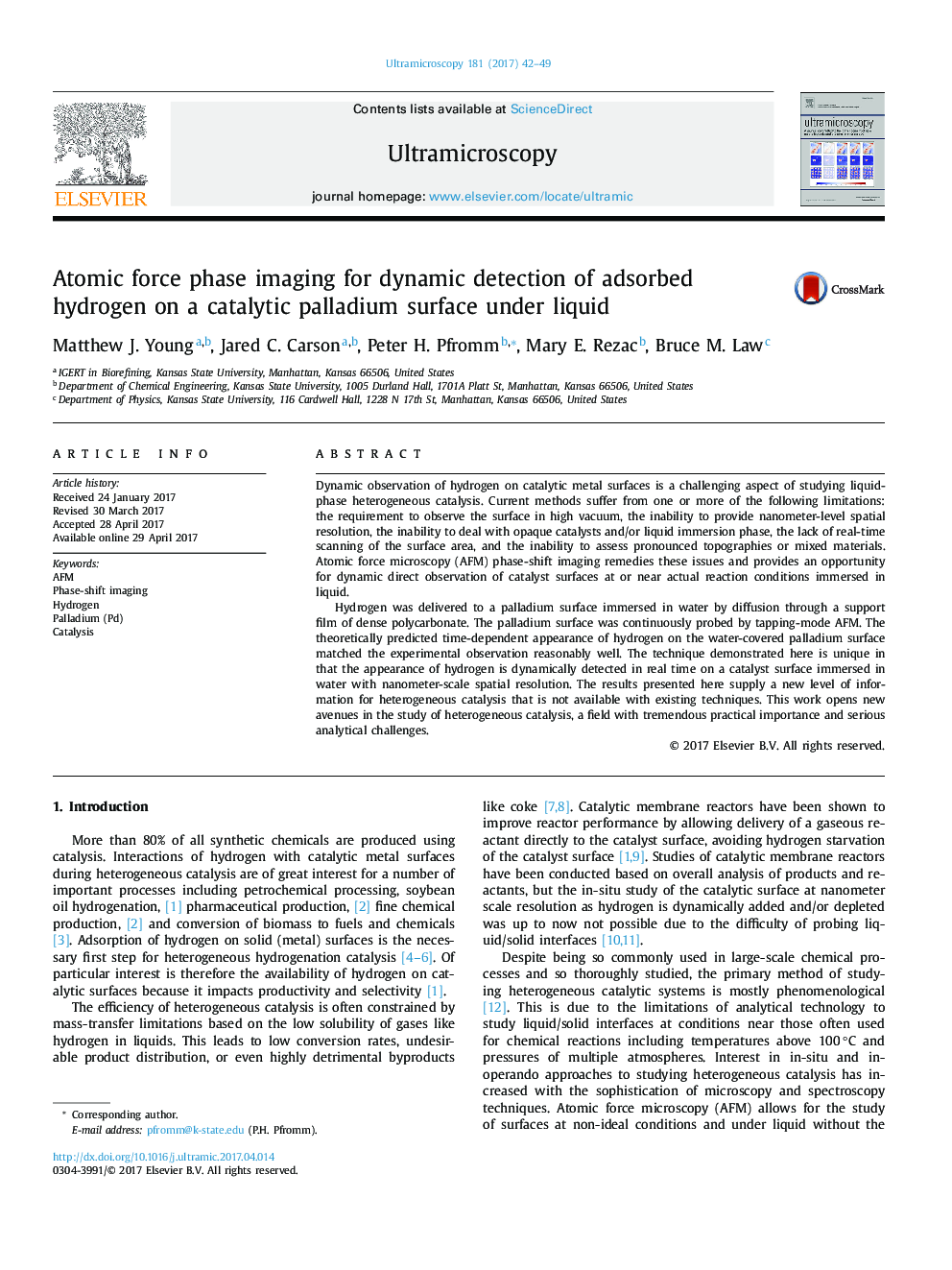| Article ID | Journal | Published Year | Pages | File Type |
|---|---|---|---|---|
| 5466653 | Ultramicroscopy | 2017 | 8 Pages |
Abstract
Hydrogen was delivered to a palladium surface immersed in water by diffusion through a support film of dense polycarbonate. The palladium surface was continuously probed by tapping-mode AFM. The theoretically predicted time-dependent appearance of hydrogen on the water-covered palladium surface matched the experimental observation reasonably well. The technique demonstrated here is unique in that the appearance of hydrogen is dynamically detected in real time on a catalyst surface immersed in water with nanometer-scale spatial resolution. The results presented here supply a new level of information for heterogeneous catalysis that is not available with existing techniques. This work opens new avenues in the study of heterogeneous catalysis, a field with tremendous practical importance and serious analytical challenges.
Keywords
Related Topics
Physical Sciences and Engineering
Materials Science
Nanotechnology
Authors
Matthew J. Young, Jared C. Carson, Peter H. Pfromm, Mary E. Rezac, Bruce M. Law,
